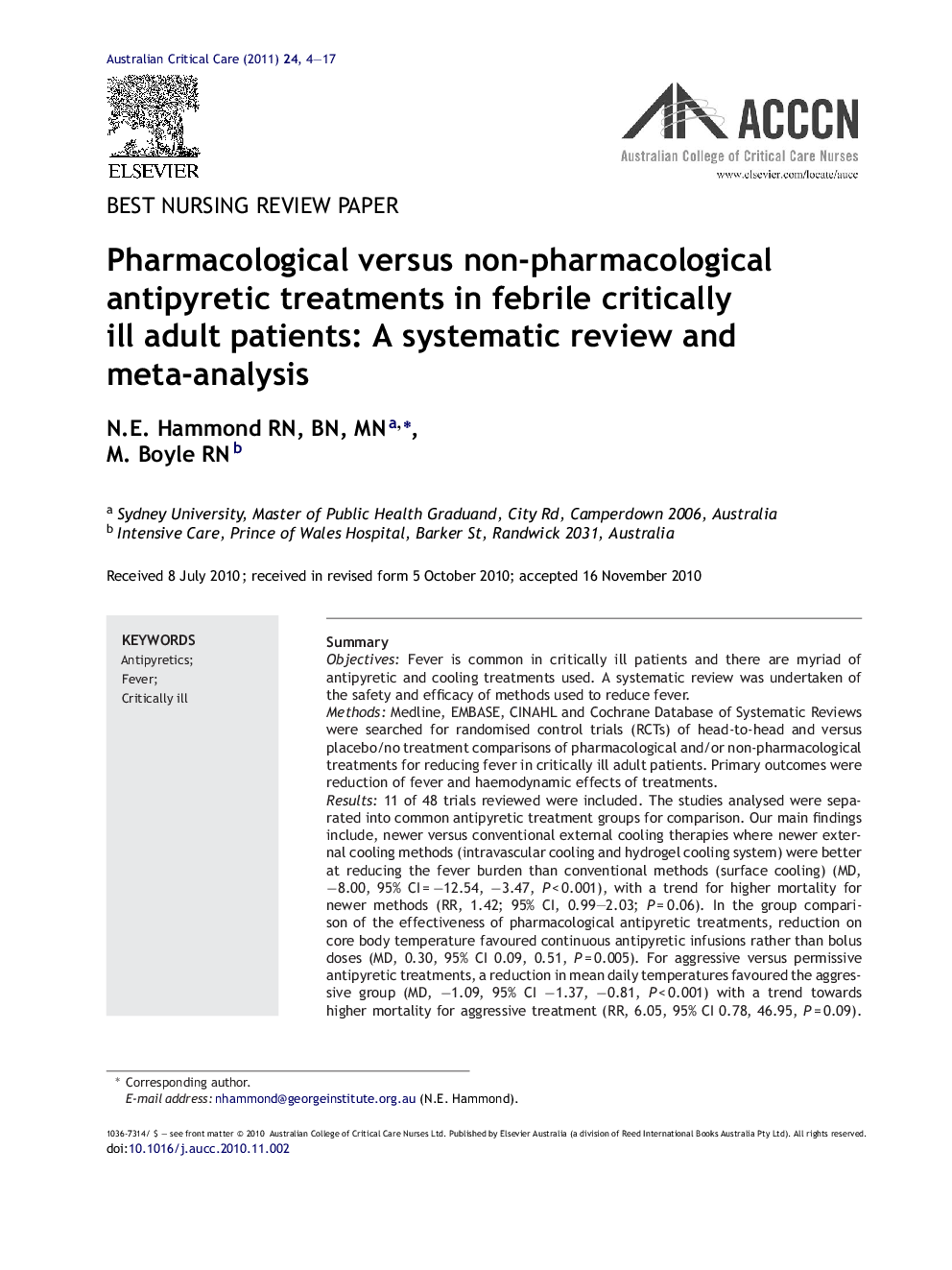| کد مقاله | کد نشریه | سال انتشار | مقاله انگلیسی | نسخه تمام متن |
|---|---|---|---|---|
| 2607166 | 1134233 | 2011 | 14 صفحه PDF | دانلود رایگان |

SummaryObjectivesFever is common in critically ill patients and there are myriad of antipyretic and cooling treatments used. A systematic review was undertaken of the safety and efficacy of methods used to reduce fever.MethodsMedline, EMBASE, CINAHL and Cochrane Database of Systematic Reviews were searched for randomised control trials (RCTs) of head-to-head and versus placebo/no treatment comparisons of pharmacological and/or non-pharmacological treatments for reducing fever in critically ill adult patients. Primary outcomes were reduction of fever and haemodynamic effects of treatments.Results11 of 48 trials reviewed were included. The studies analysed were separated into common antipyretic treatment groups for comparison. Our main findings include, newer versus conventional external cooling therapies where newer external cooling methods (intravascular cooling and hydrogel cooling system) were better at reducing the fever burden than conventional methods (surface cooling) (MD, −8.00, 95% CI = −12.54, −3.47, P < 0.001), with a trend for higher mortality for newer methods (RR, 1.42; 95% CI, 0.99–2.03; P = 0.06). In the group comparison of the effectiveness of pharmacological antipyretic treatments, reduction on core body temperature favoured continuous antipyretic infusions rather than bolus doses (MD, 0.30, 95% CI 0.09, 0.51, P = 0.005). For aggressive versus permissive antipyretic treatments, a reduction in mean daily temperatures favoured the aggressive group (MD, −1.09, 95% CI −1.37, −0.81, P < 0.001) with a trend towards higher mortality for aggressive treatment (RR, 6.05, 95% CI 0.78, 46.95, P = 0.09).ConclusionAdditional studies are needed to explore and clarify the role of antipyretic treatments in febrile critically ill adult patients.
Journal: Australian Critical Care - Volume 24, Issue 1, February 2011, Pages 4–17